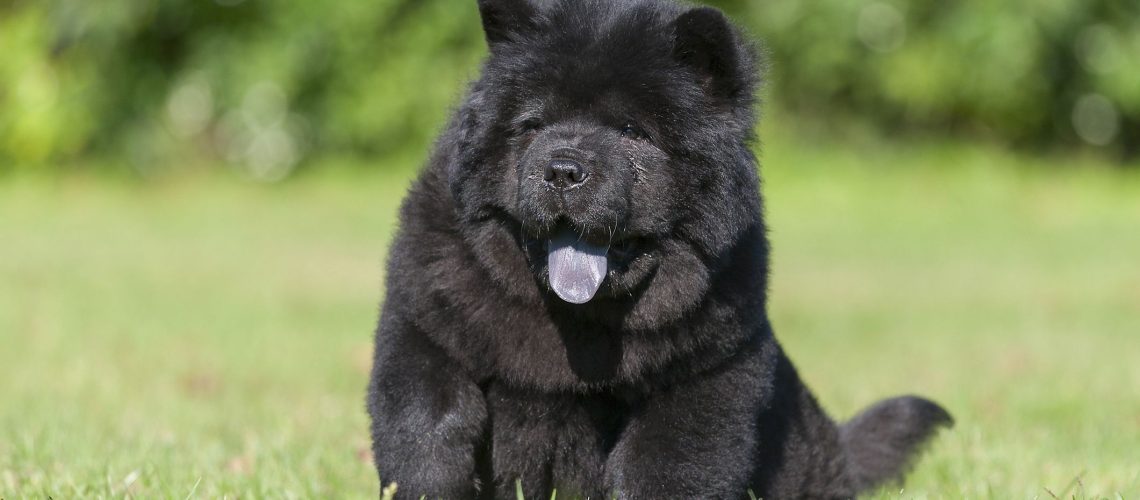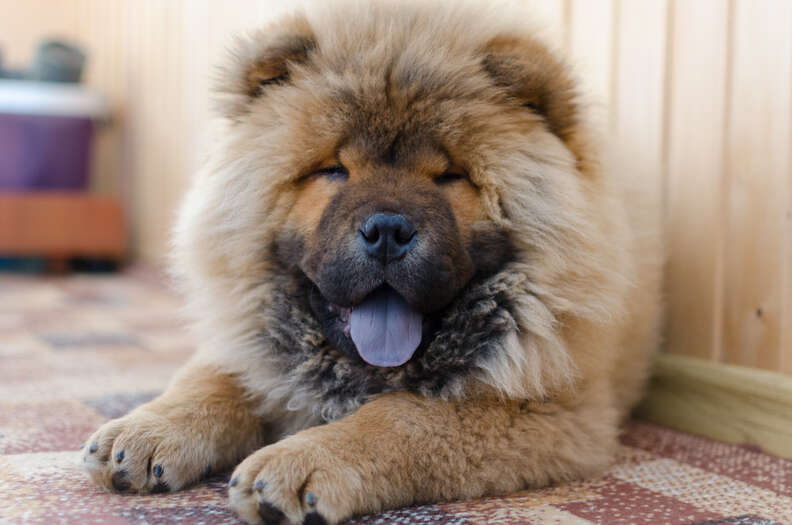Key Takeaways:
- Chow Chows are one of the most well-known dog breeds with blue tongues.
- Other dog breeds with blue tongues include the Shar-Pei, Eurasier, Thai Ridgeback, and Akita.
- The blue coloration of their tongues is due to a high concentration of pigmented cells called melanocytes.
- While having a blue tongue is unique and eye-catching, it does not affect the health or behavior of these dog breeds.
- If you are considering getting a dog with a blue tongue, make sure to research and understand the specific needs and characteristics of each breed.
Are you curious about the secret world of dogs with blue tongues? If so, get ready to embark on an exciting journey into the canine kingdom! Exploring this fascinating topic will not only satisfy your curiosity but also broaden your knowledge about the diverse breeds that exist in our furry friends. Whether you're a dog lover or simply interested in unique animal traits, understanding why certain dogs have blue tongues is essential to truly appreciate their beauty and uniqueness. So, let's dive in and uncover five dog breeds with this captivating feature that will leave you amazed and wanting to learn more. Get ready for a wild ride through the world of blue-tongued canines!
Dog Breeds with Blue Tongues: A Fascinating Trait!
Introduction
Have you ever seen a dog with a blue tongue? It's quite a unique sight, isn't it? Some dog breeds have tongues that are not the usual pink color, but instead, they have tongues that are blue or bluish-black. This is an intriguing trait that captures the attention of many people. In this article, we will explore the reasons behind why certain dog breeds have blue tongues and what makes this trait so fascinating.
The Genetic Explanation
The blue tongue in certain dog breeds is actually a result of genetics. One of the main factors contributing to this unique characteristic is the presence of pigments called melanin. Melanin is responsible for giving color to various parts of our body, including our skin, hair, and eyes. In dogs with blue tongues, there is an excess amount of melanin in their tongues, which gives them that distinct bluish hue.
It's interesting to note that not all dogs with blue tongues have the same shade of blue. Some may have lighter shades while others may have darker shades. This variation in color can be attributed to different levels of melanin present in each individual dog's tongue.
Meet the Popular Dog Breed with a Unique Blue Tongue
The Chow Chow - A Dog Breed with History
If you're looking for a dog breed with a strikingly blue tongue, look no further than the Chow Chow! The Chow Chow is a well-known breed that originated from China and has been around for centuries. These dogs are famous for their fluffy coats and lion-like appearance. But one of their most distinguishing features is their deep blue or purple-blue tongue.
- The Chow Chow's blue tongue is a defining characteristic of the breed and sets them apart from other dogs.
- It is believed that the blue tongue of the Chow Chow is an ancient trait that has been passed down through generations.
- While the exact reason behind why Chow Chows have blue tongues remains a mystery, it adds to their allure and uniqueness.
Understanding any Health Concerns Related to Dogs' Blue Tongues
No Need to Worry: Blue Tongues are Natural
If you come across a dog with a blue tongue, there's no need to panic or assume that something is wrong. In most cases, having a blue tongue is completely normal for certain dog breeds. It is just a natural variation in pigmentation and does not indicate any health concerns or problems.
However, it's important to note that if you notice any other unusual symptoms or changes in your dog's behavior along with a blue tongue, it would be wise to consult with a veterinarian. While rare, there are some medical conditions that can cause discoloration of the tongue, so it's always better to be cautious and seek professional advice if needed.
Identifying if a Dog Has a Blue Tongue: What to Look For
A Distinctive Trait That Can't Be Missed
If you want to identify whether a dog has a blue tongue or not, it's quite easy! Just take a look at their mouth. A dog with a blue tongue will have a noticeable bluish color on their entire tongue or parts of it. The intensity of the color may vary from light blue to dark bluish-black.
Keep in mind that not all dogs with dark tongues have blue tongues. Some breeds, like the Labrador Retriever and the Newfoundlands, have tongues that are naturally dark without being blue. So, it's important to consider the overall coloration of the tongue and not just its darkness when determining if it is truly blue.
Exploring the Connection Between a Dog's Tongue Color and its Behavior
No Link Between Tongue Color and Personality
Now, you might be wondering if there is any connection between a dog's tongue color and its behavior or personality. Well, the truth is that there is no scientific evidence to support such claims. The color of a dog's tongue has no influence on their temperament or characteristics.
So, whether a dog has a pink tongue or a blue tongue, it doesn't make them any more aggressive, friendly, or intelligent. It's simply a physical trait that varies among different breeds and individuals within those breeds.
Unveiling Other Unique Physical Characteristics of Dogs with Blue Tongues
A Tongue That Matches Their Unique Appearance
Dogs with blue tongues often have other physical characteristics that make them stand out from the crowd. For example, Chow Chows, in addition to their blue tongues, have thick double coats that resemble lion manes. They also have straight hind legs which give them a distinctive gait.
Similarly, some other breeds with blue tongues may have unique features like curled tails or different eye colors. These physical traits add to their charm and make them even more fascinating to observe and interact with.
Unveiling Other Unique Physical Characteristics of Dogs with Blue Tongues
1. Coat Color and Texture
Dogs with blue tongues often have unique coat colors and textures that make them stand out from other breeds. While the blue tongue is the most distinctive feature, these dogs may also have coats in shades of black, gray, or brown. Their fur can be thick and dense, providing excellent protection against cold weather conditions. Additionally, some breeds with blue tongues may have a double coat, consisting of a soft undercoat and a longer outer coat that repels water.
Examples:
- The Chow Chow breed is known for its dense and fluffy coat, which comes in various colors including black, blue, cinnamon, or cream.
- The Shar-Pei breed has a short and bristly coat that can be solid-colored or bear different patterns like sable or cream.
2. Ear Shape and Size
Another intriguing characteristic of dogs with blue tongues lies in their ear shape and size. Many of these breeds exhibit unique ear structures that add to their overall charm. Some dogs may have erect ears that stand tall on their heads, while others may have floppy or folded ears that give them an adorable appearance.
Examples:
- The Siberian Husky breed is recognized for its erect triangular-shaped ears that contribute to its alert expression.
- The Chinese Shar-Pei breed possesses small, rounded ears that fold forward slightly, giving them a distinctive look.
3. Eye Color
In addition to their striking blue tongues, dogs with this characteristic often boast captivating eye colors as well. Their eyes can range from shades of amber and hazel to deep brown or even icy blue. These mesmerizing eye colors enhance the overall allure of these unique canines.
Examples:
- The Australian Shepherd breed is known for its captivating eyes, which can be blue, amber, or a combination of both.
- The Weimaraner breed often has striking light-colored eyes in shades of blue-gray or amber.
By exploring these additional physical characteristics, we gain a deeper understanding and appreciation for the fascinating traits that make dogs with blue tongues truly special. Whether it's their coat colors and textures, ear shapes and sizes, or mesmerizing eye colors, these unique features contribute to the overall charm and appeal of these remarkable canines.
In conclusion, there are five dog breeds that have blue tongues: Chow Chows, Shar-Peis, Akitas, Weimaraners, and Eurasiers. These unique breeds stand out with their distinct blue tongues, adding to their special characteristics.
What dog breeds have blue tongue?
The chow chow and the shar-pei are breeds of dogs that always have tongues that are solid blue in color. The Eurasier and Thai ridgeback breeds can have tongues that are either black-spotted or solid blue-black in color. There are also other breeds and mixed breeds that may occasionally have tongues that are blue or pink with blue spots.
How many breeds of dogs have a blue tongue?
According to official sources, there are only three dog breeds in which a blue tongue is not considered a cause for concern, but rather a unique characteristic of the breed. These breeds include the Chow Chow, Eurasier, and Shar Pei.
Do all Shar Pei have blue tongues?
The Chinese Shar-Pei is a breed known for having a solid blue-black tongue, although not all Shar-Peis have this trait. Another breed, the Chow Chow, also has a solid blue-black tongue. However, there are exceptions in Shar-Peis with diluted coat colors, as they may have solid lavender pigmentation on their tongue. This information was last reported in July 2017.
What does a blue tongue on a dog mean?
If your tongue appears to be dark red, purple, or blue, it could indicate heatstroke, exposure to toxins, heart or lung disease, or electrical shock. On the other hand, a pale pink or white tongue could be a sign of severe anemia caused by an immune-mediated disease or internal bleeding.
Which breed has a blue-black tongue?
Chow Chows are not the only breed with this distinct characteristic. If you have ever come across a Chow Chow, you would have likely observed its special blue-black tongue. In fact, both Chow Chows and Chinese Shar-Peis have a breed standard that requires a blue-black tongue.
What color dog is rare?
For instance, dogs with a merle color pattern, commonly seen in breeds like Australian Shepherds and Great Danes, often experience deafness or eye problems. Another rare color variation is the blue or lilac dog, which also has its own set of issues. If you're interested in determining whether your dog has a lilac color, you might be curious about the signs to look out for.

















